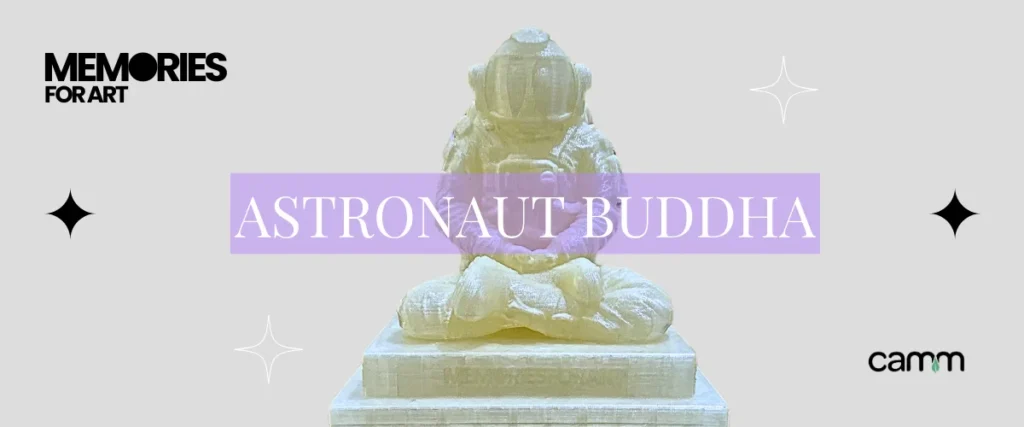The Museum of Modern Art (MoMA) has recently acquired the artwork “Machine Hallucinations” by artist Refik Anadol. It marks a historic first for MoMA, the first time they have purchased an artwork created entirely with artificial intelligence (AI). The acquisition signals a new era for art and technology, where AI can create unique works that push boundaries and challenge our preconceived notions about what art can be.
Exploring the Museum of Modern Art (MoMA)
The Museum of Modern Art, or MoMA for short, is one of the world’s most renowned modern art museums. It is located in New York City and has an impressive collection that spans from classic to contemporary works. This article will explore what makes MoMA so unique and why you should visit if you ever get a chance.
What Can You See?
At MoMA, many different types of artwork are on display, ranging from painting to sculpture to photography and more! Additionally, they have several interactive installations, such as virtual reality experiences, which allow visitors to immerse themselves in new ways with each piece they encounter.
The Museum of Modern Art is truly an incredible place filled with inspiring artwork that appeals not only to those passionate about fine arts but to all kinds of audiences alike! Whether you’re looking for education or entertainment – visiting here will surely leave you feeling enriched after your journey through its vast collections spanning centuries of creativity!
What Is Machine Hallucinations?
Machine hallucinations are a type of artificial intelligence (AI) technology that is used to generate realistic images and videos from data. This technology has been around for some time, but it has recently gained more attention due to its potential applications in healthcare, security, and entertainment. In this topic, we will explore what machine hallucinations are and how they work.
Overview
At its core, machine hallucination is creating an image or video based on input data without human intervention. It uses AI algorithms to analyze the data and visually represent it. The result can be anything from a simple still image to an animated scene with multiple objects moving around in 3D.
How Does It Work?
The first step in the process is collecting data, which usually comes from sources like cameras or sensors. Once this information is gathered, it must be processed using AI algorithms before being turned into visuals by generating pixels on-screen or through other methods such as ray tracing or volumetric rendering techniques. Finally, these rendered visuals must be refined until they look realistic enough for their intended purpose – medical imaging software or virtual reality games!
Benefits
One of the main benefits of machine hallucination is its ability to quickly generate high-quality visuals without requiring manual labor or expensive hardware resources like GPUs (graphics processing units). Additionally, since no humans are involved in the creation process, there’s less room for error than traditional animation techniques, where mistakes can take hours, if not days, to fix!
Furthermore, because all of this happens automatically, it allows developers more freedom when designing complex scenes that would require significant amounts of time if done manually.
What Technology Does Refik Anadol Use?
One of Refik Anadol’s most famous pieces, “Machine Hallucinations,” combines artificial intelligence (AI) and machine learning algorithms to create mesmerizing visuals exploring the relationship between humans and machines.
Please look closely at what technologies he used to create this work.
Artificial Intelligence (AI)
AI was used to generate the images for Machine Hallucinations by analyzing large datasets such as Google Street View photographs or NASA satellite imagery. The AI then created new visualizations based on these data sets, which were projected onto worldwide buildings.
Machine Learning Algorithms
Various machine learning algorithms were also employed to produce more complex patterns within each image generated by the AI system. These included generative adversarial networks (GANs), convolutional neural networks (CNNs), recurrent neural networks (RNNs), extended short-term memory models (LSTMs), variational autoencoders (VAEs), and deep reinforcement learning systems, among others.
Projection-Mapping
Finally, projection mapping was used to project these digital creations onto physical surfaces like walls or other structures located around cities worldwide. It allowed viewers both near and far away from the artwork to experience its full glory without having any prior knowledge about how it had been made possible through technology alone!
Refik Anadol has combined several cutting-edge technologies into one powerful piece of artwork with his work ‘Machine Hallucination’ – using artificial intelligence, various machine learning algorithms, and projection mapping techniques for maximum effect!
By doing so, he has pushed boundaries when creating beautiful visuals and exploring our ever-evolving relationship with technology, too!
Why Is This Acquisition Significant?
The Museum of Modern Art (MoMA) has marked a historic milestone by acquiring the first artwork created entirely through artificial intelligence. The work, titled “Machine Hallucination,” was created by Turkish artist and media designer Refik Anadol in collaboration with Google Arts & Culture Lab. This acquisition marks a critical moment for art history and technology as it is the first time AI-generated artwork has been acquired into MoMA’s permanent collection.
This acquisition marks a critical moment for art history and technology as it demonstrates how AI can be utilized to create unique works of art that are aesthetically pleasing and thought-provoking at the same time. Additionally, this acquisition shows how institutions like MoMa embrace new technologies while maintaining their commitment to preserving traditional artistic expression.
What Does This Acquisition Mean For Technology And Art?
This acquisition signifies a significant shift in how we view technology-driven artworks like Machine Hallucinations. It shows us that there is now potential for artists who use AI tools to create meaningful art pieces worthy of being displayed in museums alongside traditional works.
In addition, it also demonstrates how far AI has come since its inception – no longer just seen as something used solely for practical purposes but rather something capable of producing creative outputs, too!
Refik Anadol’s “Machine Hallucination” represents a significant milestone in modern art history because it is the first piece generated using Artificial Intelligence to enter into MoMA’s permanent collection. It demonstrates how far we have come technologically and proves that even though our methods may change over time, our passion for creativity will remain constant throughout all generations.
Takeaway
The purchase of Refik Anadol’s “Machine Hallucinations” by MoMA represents a significant milestone in terms of technological advancement and within the realm of contemporary art itself. By acquiring this piece, MoMA acknowledges not only its artistic value but also its importance when considering how rapidly evolving technologies are changing our understanding and appreciation for creativity today – proving once again why modern art remains at the forefront when exploring innovation across all disciplines!







